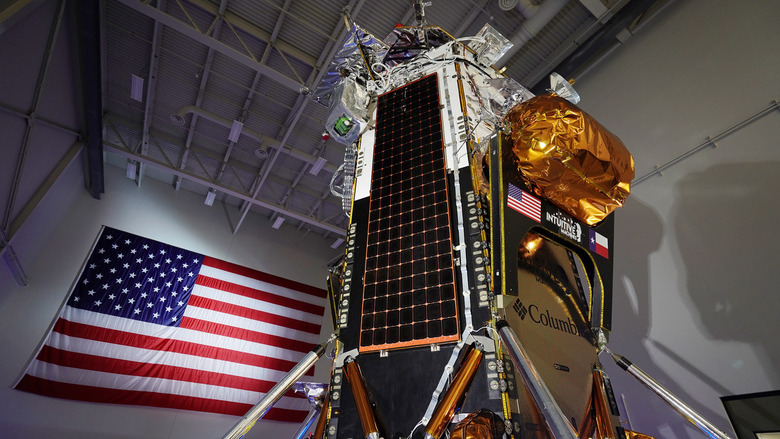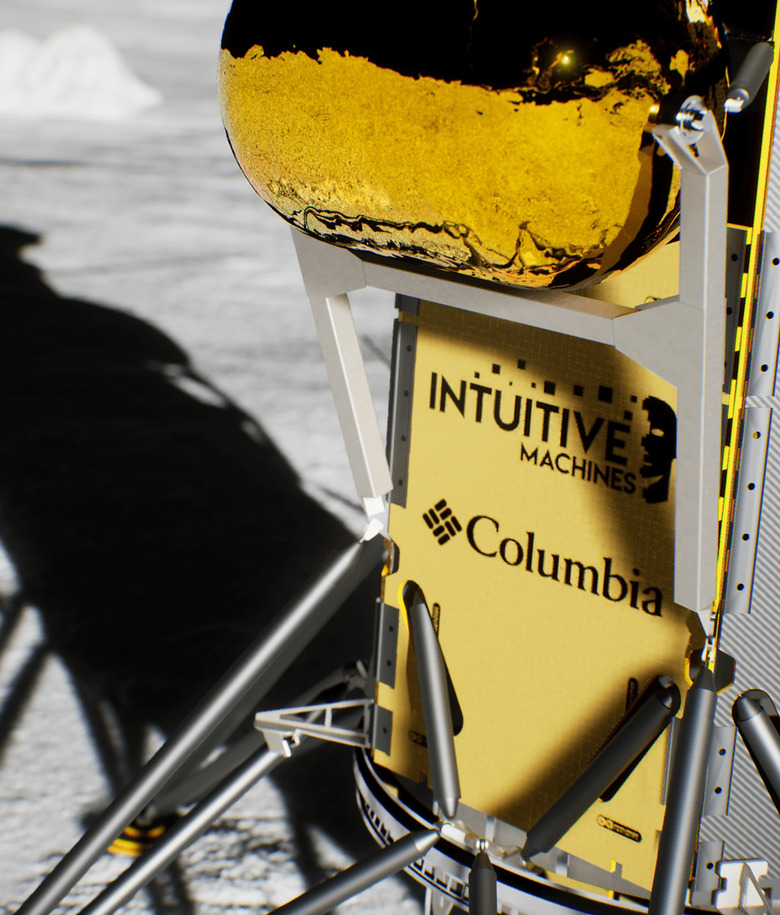How A Clothing Company Is Helping Innovate In Space Exploration
This week, Intuitive Machines will launch its IM-1 mission, sending the Nova-C lander barreling towards the Moon in what it hopes will be the first successful U.S. Moon landing since the Apollo program. There's something special about this lander, though. It's the first to include Columbia's Omni-Heat technology as an insulating material, something that most might not have expected.
Heading into the final days before the launch, I caught up with Columbia's VP of Innovation, Dr. Haskell Beckham, to talk about this intriguing partnership.
Coming full circle
To the average person, the partnership between Columbia and Intuitive Machines might seem a bit out of left field. But it's actually more of a full circle for the sportswear company.
"The original Omni-Heat was actually inspired by the old NASA space blankets," Dr. Beckham explained to me in a call. But there's one key difference between the technology used to make Omni-Heat work and the original space blankets — Columbia combined the reflective technology of the space blanket with a more breathable fabric to allow for moisture to escape, making it more useable as an everyday insulation.
The first version of Columbia's Omni-Heat tech launched back in 2010, and it has quickly become an integrated part of the company's cold weather gear. But ensuring it was up to snuff for a trip to space is a bit different than withstanding a trip up the mountain in the snow.
Dr. Beckham says that when Intuitive Machines first approached Columbia, he didn't think anyone was aware of just how closely the two companies would work together.
"I think they were just trying to approach us as a sponsor," Dr. Beckham said. "But during our first meeting, myself — and I think our Brand President, Joe Boyle — immediately saw the connection. But it wasn't until the second meeting that it all really clicked and made sense."
Putting Omni-Heat on a lander
In 2021, Columbia introduced an updated version of its Omni-Heat material called Omni-Heat Infinity. This version used a golden liner to help provide more heat insulation than the original Omni-Heat did. "The Omni-Heat Infinity material that you see in our coats and other outdoor wear is the exact same material you can see on Intuitive Machine's lander," Dr. Beckham told me.
That means if you have a piece of Columbia clothing with the Omni-Heat Infinity technology, like the company's Arch Rock Double Wall Elite jacket, then you have the very same material that is attached to Intuitive Machines' lander, helping to protect some of its most vital instruments.
This is really exciting, as that material has now proven it can withstand the extreme temperatures of the vacuum of space, including withstanding temperatures from negative 250 degrees Fahrenheit to positive 250 degrees Fahrenheit. Dr. Beckham says that Columbia had to put the material through tests they probably never would have imagined putting it through. And that everyone was prepared to change it to make it work better for the lander.
Thankfully, that wasn't necessary, he explained. The Omni-Heat tech performed perfectly for insulating the important instruments and components on the Nova-C lander without being altered.
The inclusion of Columbia's Omni-Heat tech on a moon lander like the Nova-C is also a huge step forward in finding everyday materials to use in space exploration, something that could hopefully help cut down on the costs of creating landers and spacecraft in the future — space exploration continues to be an increasingly costly venture.
Growing forward
This partnership has done more than showcase new ways for Columbia to test its products. Dr. Beckham says that the company is already working on a new innovative product, but he was unable to tell me much about it — trade secrets and all.
Whatever it ends up being, Dr. Beckham says that the company is already working with Intuitive Machines to use Omni-Heat technology on more spacecraft. The journey to put Columbia's material on spacecraft has pushed the company to continue its goal of always pursuing new and innovative ways to change how people stay warm or cool, no matter where they're going.
Perhaps one day, we'll even see Columbia's Omni-Heat tech used in spacesuits. That, of course, is just speculation on my part. But considering how useful it has proven to consumers here on Earth and its ability to offer protection in space for vital instruments aboard landers like the Nova-C, it wouldn't be surprising to see Columbia (or others) tapped to help develop new spacesuits somewhere down the line.


